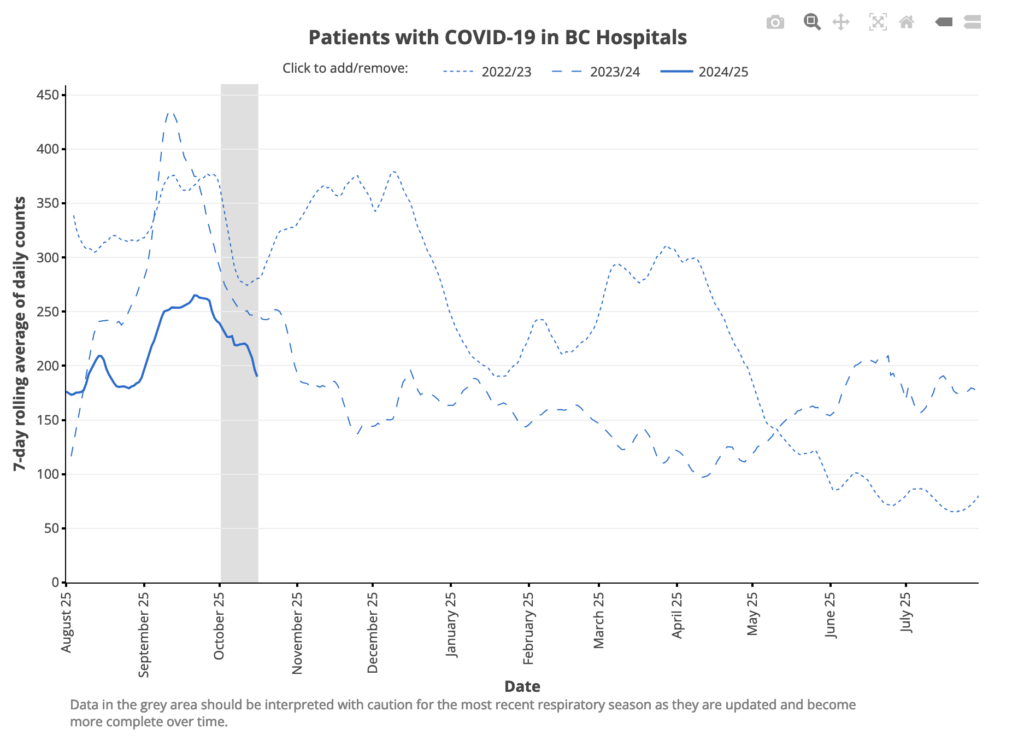All indicators say that the levels of COVID-19 are coming down noticeably at the moment.
Regarding influenza vaccines, flu rates have ticked up slightly but are still really low. It feels to me like we are about two weeks behind last year’s flu season, so I think that means flu will probably peak in late December. This paper (2017-02-09) says that maximum effectiveness of the flu shot is two weeks after you get it, and the effectiveness decreases by 7% per month after that.

When I eyeball the charts, I think I should probably get a flu shot in about two weeks. I believe it’s easy to get a flu shot on short notice, so I am still going to wait a bit before booking.
Charts
From the BC CDC Situation Report:




Looking at it over the long haul, however, the COVID-19 level actually looks pretty stable. (Not good, but stable.)

Comparison vs. Other Influenza-Like-Illnesses, from the Viral Pathogen Characterization page:

Flu and RSV moving up to where they are starting to be noticeable. (Sorry, I had mistakes in this section when I published (and maybe the data was not final?)
In the week ending Nov 9, among confirmed cases, there were
~4.14.0 times as many COVID-19 cases as flu cases,~4.43.8 times as many COVID-19 cases as RSV cases,~2.71.4 times as many COVID-19 cases as enterovirus or rhinovirus cases.
Reminder: the graphs below don’t tell how many cases there were, but how many cases they found when testing. Almost nobody gets tested.

Wastewater
From Jeff’s wastewater spreadsheet:

H5N1
Transmission
(See this week’s General post for news of the teen in Fraser Health with bird flu.)
This article (2024-11-12) reports there are currently 26 bird flu outbreaks at poultry farms in BC. This is not a surprise. Bird flu has been around for forever; H5N1 has been around since 1996, in North America since at least 2021, and it was even been found in wild animals (see this article about infected skunks (2023-03-13) for years. H5N1 spreads easily among birds, we have lots of migratory birds pass through BC, and poultry are birds.
What we do not have in BC, as far as has been reported, is bird flu in mammalian livestock like cattle or pigs.
Testing
This article (2024-11-13) confirms that BC is actively looking for H5N1 in wastewater.
